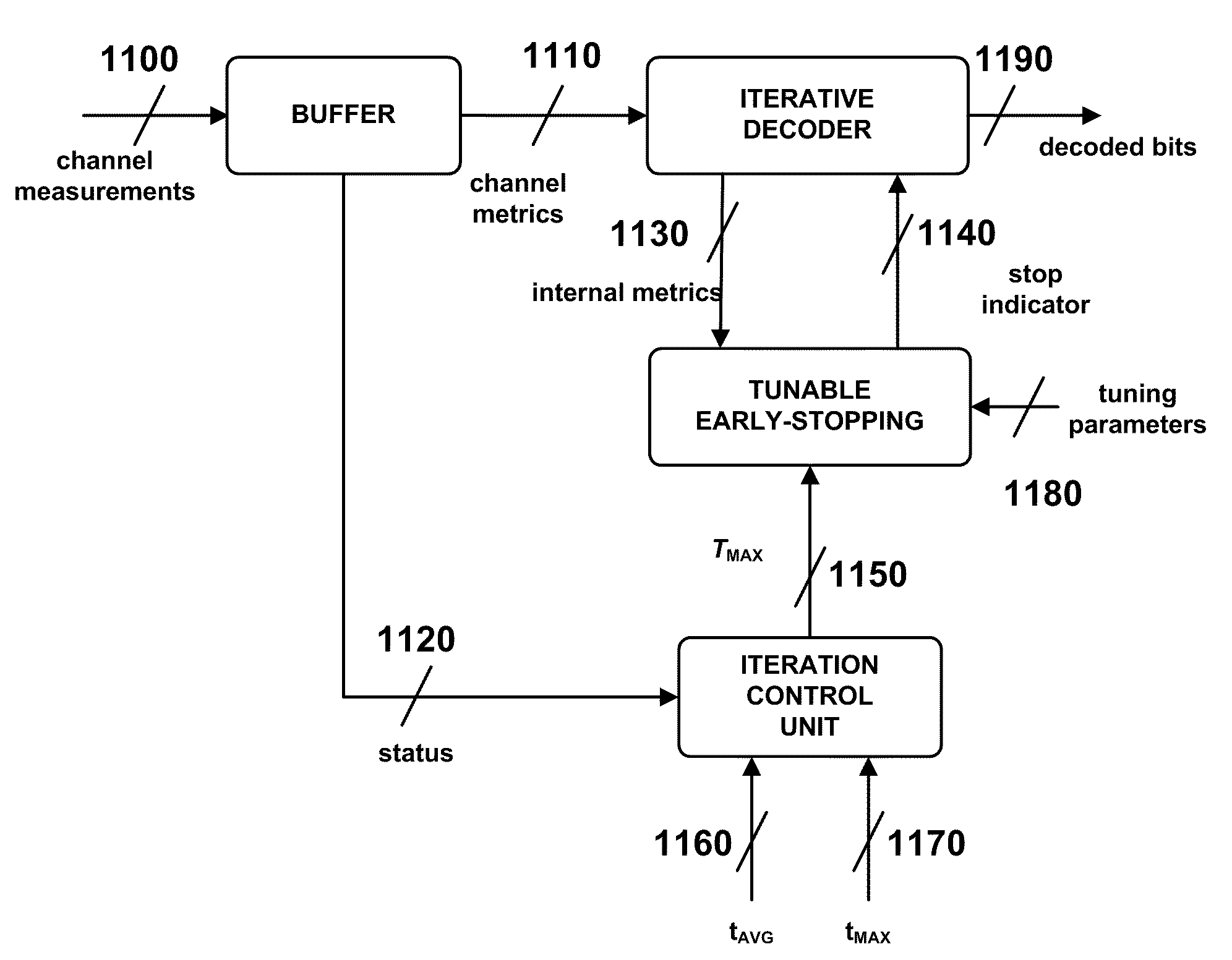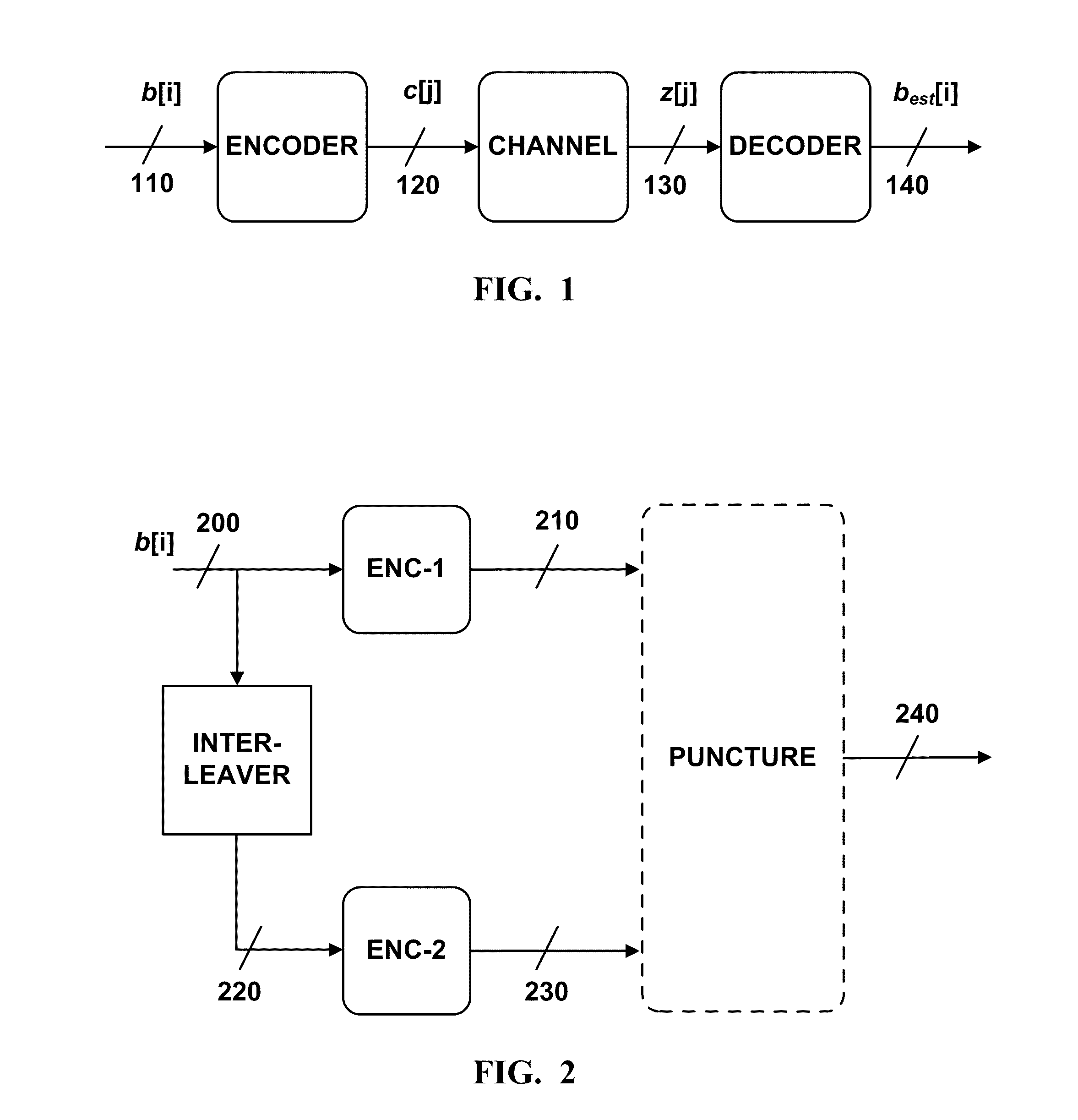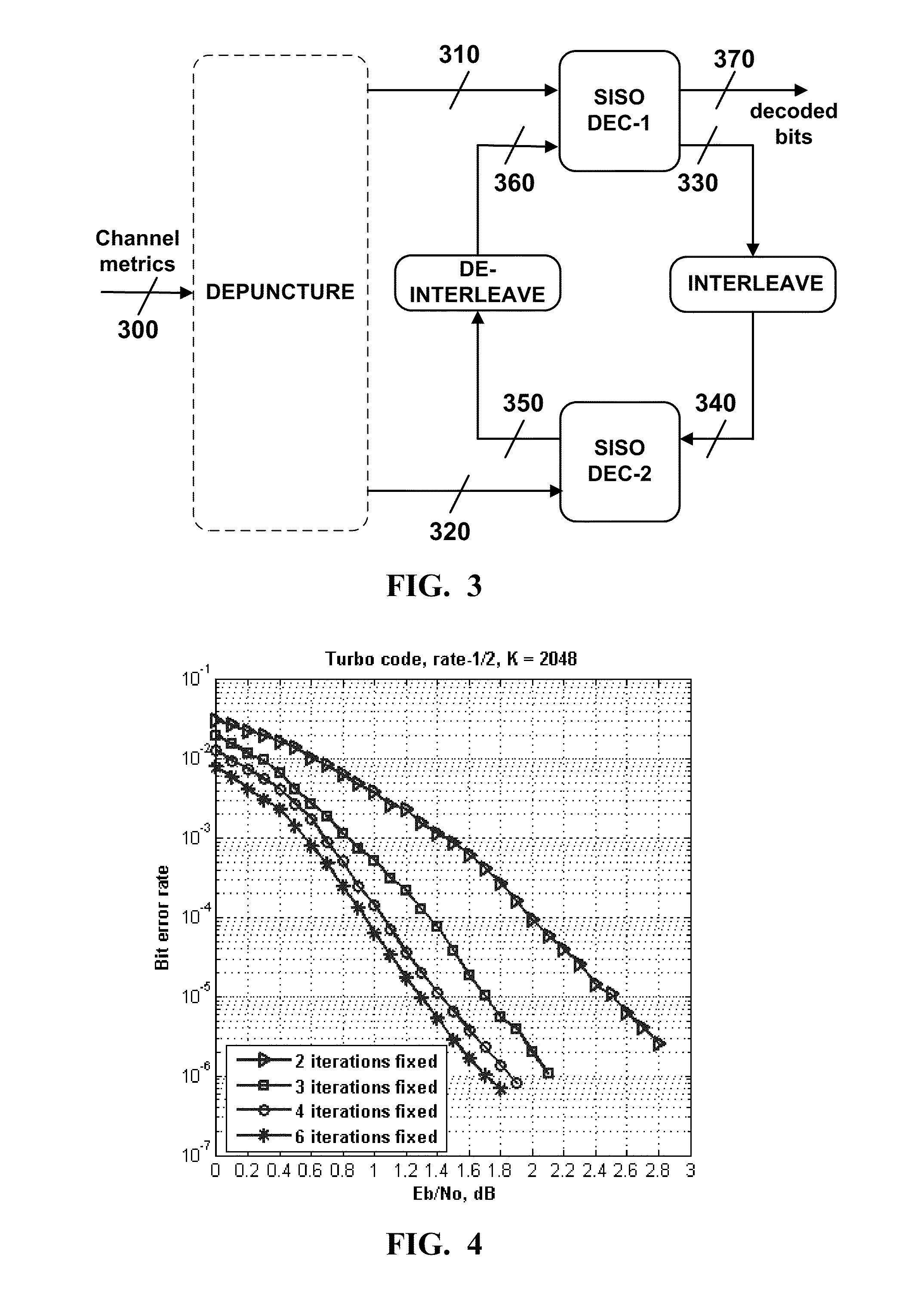Tunable early-stopping for decoders
a decoder and early-stopping technology, applied in the field of data communication error correction techniques, can solve the problems of affecting the latency, complexity, power consumption, performance, etc. of the iterative decoder, and the decoding algorithm with variable complexity and latency, and the inability to take advantage of the average improvement
- Summary
- Abstract
- Description
- Claims
- Application Information
AI Technical Summary
Benefits of technology
Problems solved by technology
Method used
Image
Examples
Embodiment Construction
[0057]Embodiments of the present invention provide systems and methods for tuning early stopping rules to allow performance trades in iterative decoders using modern error correcting codes (e.g., turbo-like codes) as measured by throughput, latency, error rate performance, and memory requirements. Some embodiments use a tunable early stopping algorithm to stop an iterative decoder when a suitable error performance has been achieved. This may be before convergence has occurred. A tunable early stopping algorithm can monitor the performance of an iterative decoder by computing a fidelity estimate. A fidelity estimate is an estimate of the error performance of the decoder or a quantity that is correlated with error rate performance. By stopping an iterative decoder based on the fidelity estimate, a tunable early stopping algorithm can allow the iterative decoder to operate in regimes prior to convergence. This can provide a mechanism for trade off between decoded performance and number...
PUM
 Login to View More
Login to View More Abstract
Description
Claims
Application Information
 Login to View More
Login to View More - R&D
- Intellectual Property
- Life Sciences
- Materials
- Tech Scout
- Unparalleled Data Quality
- Higher Quality Content
- 60% Fewer Hallucinations
Browse by: Latest US Patents, China's latest patents, Technical Efficacy Thesaurus, Application Domain, Technology Topic, Popular Technical Reports.
© 2025 PatSnap. All rights reserved.Legal|Privacy policy|Modern Slavery Act Transparency Statement|Sitemap|About US| Contact US: help@patsnap.com



